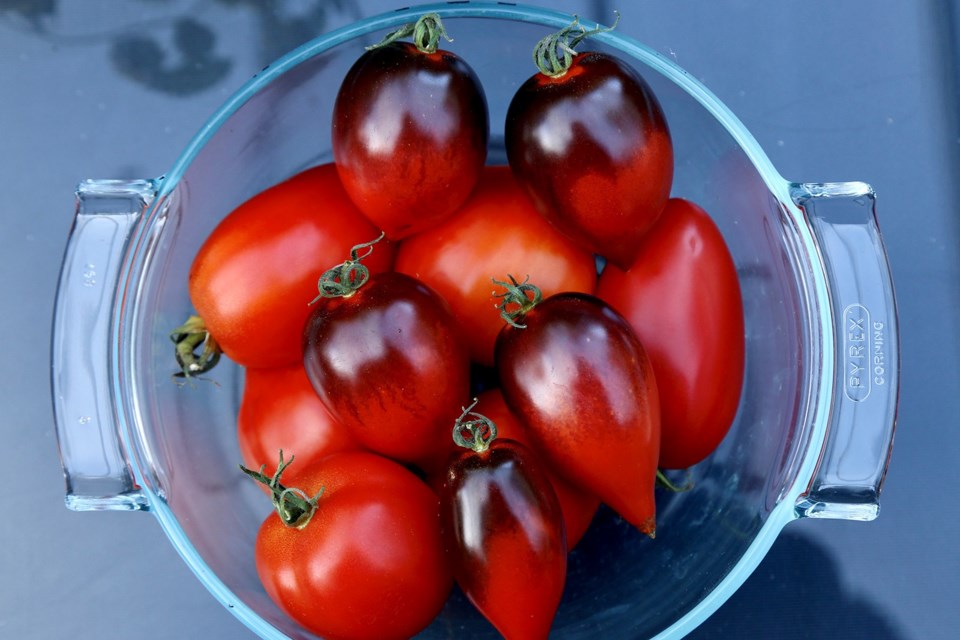Suddenly it is spring and I struggle to contain my enthusiasm alongside a winter’s worth of reading – revisiting ancient wisdom, while discovering new scientific insights into the interconnectedness of foraging, growing, preparing and metabolizing food as medicine.
It is difficult to sort and file it all away for easy access, so to help me maximize nutrient density when planning our garden, shopping for produce and protein, and designing healthful menus, I keep three principles top of mind.
The fundamental and overarching principle is: “We are only as healthy as what we eat, eats.” That is, garbage in equals garbage out, or real produce and protein grown on a diet of all natural, organic goodness is what I choose to support, grow and cook.
Second, “Eat and grow the rainbow whenever possible,” and I include both taste and colour in those spectrums. Pigment, taste and smell indicate specific values, phytochemicals, nutrients and benefits that singularly and in combination help support a balanced diet.
And finally, “Wild and traditional foods are almost always more nutrient dense than conventional.” Include fresh or preserved wild or heritage vegetables, fruits, herbs and fungi to access trace nutrients, especially when access to fresh local produce is limited.
Just this past week, we started tomatoes and many other food plants indoors, under grow lights and circulating fans. Typically, we begin mid February, but extraordinary winter weather encouraged a pause. The extra time afforded me an opportunity to supplement my seed orders, and to hyper-activate and experiment with a new living soil, custom formulated by Terra Flora Soilworks.
The 100-per-cent organic dry mix base formulation included Canadian sphagnum peat, HydraFibre, pumice, oyster shell flour, mycorrhizae, humic acid, fulvic acid, fungal dominant worm castings (poop), red wriggler worm cocoons, insect frass (more poop), full spectrum water-soluble trace minerals and elements, bokashi, BioBoost and biochar.
To 100 litres (about three cubic feet) of base mixture, I added a few litres of our native worm castings, and some unsulphured blackstrap molasses dissolved in water (30 millilitres per litre). The water was rested overnight to evaporate out any biology-killing chlorine or chloramine. Rainwater is best, if you can manage it.
Tomatoes are packed with disease-fighting bioactives
I know from experience that sweet molasses water and worm castings activate and inoculate (feed biology) biochar quite quickly, allowing it to get to work more-or-less immediately, attracting and storing moisture and soil nutrients for plant roots to access as needed. We combined all ingredients in a tumbler-style composter (air holes plugged with silicone), hydrating until the dampened soil held together like moist chocolate cake, when squeezed in my hand.
After just a few weeks, the soil was carbon black and beautiful, fragrant like an ancient rainforest. Into the delicious medium we sowed white, yellow, orange, pink, red, purple, green and black-skinned tomato seeds, mostly heritage varieties, with fruit sizes ranging from currant to hefty one-pounders.
Numerous studies reveal that tomatoes offer an ever-growing range of beneficial chronic disease fighting bioactives, including lycopene, rutin and beta-cryptoxanthin. Each colour and variety of tomato offers a unique combination of phytonutrients, with tangerine orange and black-red skinned tomatoes offering some of the greatest potential benefits – the latter delivering 1,000-times more lycopene than yellow.
Interestingly, guided purely by taste and intuition, we have for years been growing, oven-drying (in olive oil) and freezing tangerine orange, dark red and red-black cherry tomatoes for winter use.
We are discovering now, that by elegant co-evolutionary design, plant phytochemicals can be seen, tasted and smelled (sometimes felt and heard), by the very pollinators, predators and propagators upon which the survival of their species depends.
I am humbled by nature. She is so very clever.
Laura Marie Neubert is a West Vancouver-based urban permaculture designer. Follow her on Instagram @upfrontandbeautiful, learn more about permaculture by visiting her Upfront & Beautiful website or email your questions to her here.
For a taste of permaculture, click on the YouTube link below:




